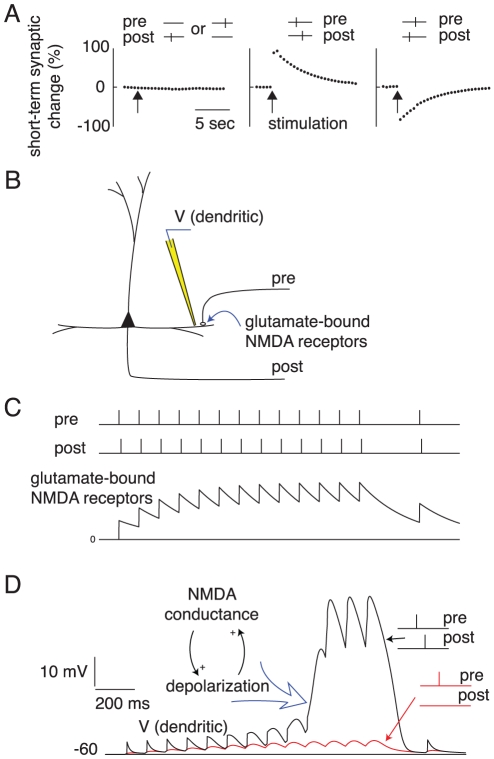Figure 2. Associative short-term plasticity implemented in a form of short-term-STDP or via simulated NMDA receptors resulting in NMDA spikes.
(A) The synaptic change is triggered by the classical STDP protocol at time “stimulation” (marked by arrows) but the change decays to 0 (baseline) within a few seconds. Left panel shows that firing of only pre- or post-synaptic neurons does not trigger any synaptic change. The middle panel illustrates that firing in the order pre-before-post induces short-term augmentation, as opposed to the post-before-pre (Right panel) resulting in short-term depression. (B–C) Short-term amplification of synaptic responses via simulated NMDA receptors resulting in NMDA spikes. (B) Schematic diagram showing a multi-compartmental neuron (post) receiving a synapse from a pre-synaptic neuron (pre). (C) A train of presynaptic spikes is followed by a postsynaptic response delayed by 10 ms and caused by other synaptic inputs. Each pre-synaptic spike activates postsynaptic NMDA receptors and deactivates with time constant of 250 ms. (D) Persistent pre-then-post train of action potentials flips the dendritic compartment into up-state. While in the up-state, each pre-synaptic spike results in a large-amplitude dendritic excitatory postsynaptic potential (black trace V (dendritic)), often called NMDA spike, that can propagate to the soma and enhance the efficacy of the synaptic transmission in eliciting somatic spike. The red trace shows the control simulation when the post-synaptic spikes are absent: No significant increase in synaptic efficacy is observed in this case. Similarly, post-before-pre patterns do not result in significant enhancement of synaptic transmission unless the timing is such that there is a residual depolarization when pre-synaptic spike arrives, or there is a residual glutamate in synaptic cleft from the previous pre-spike when post neuron fired. The voltage traces in sub-panel (D) are simulations of a passive dendritic compartment with voltage-dependent NMDA conductance.

